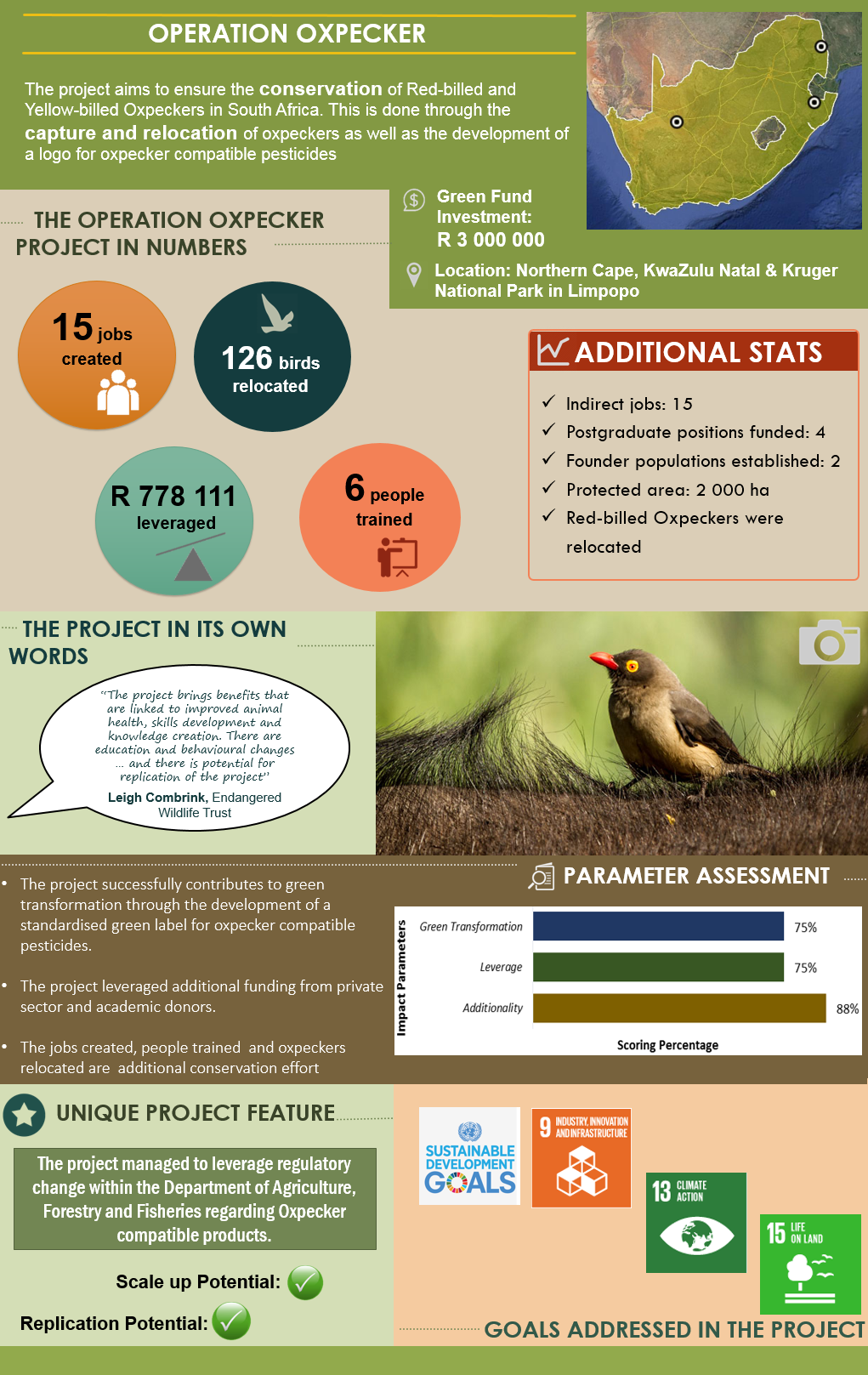An Overview Of Our Solution
- Population Impacted:
- Continent: Africa
Organization type
Population impacted
Size of agricultural area
Production quantity
People employed
Describe your solution
Describe your implementation
External connections
What is the environmental or ecological challenge you are targeting with your solution?
Describe the context in which you are operating
Our project operates within the agricultural sector, specifically with farmers who keep livestock and/or wildlife. Our aim is to restore the tick-control ecosystem service (reduce tick burdens and prevent the spread of tick-borne diseases) that RBOs provide. The presence of RBOs significantly reduces the amount of ectoparasiticides needed to control tick numbers in both livestock and wildlife. Additionally, emerging farmers, who cannot afford to regularly dip their animals, benefit from having oxpeckers present. This, in turn, means that they do not resort to mixing their own dips/ “home-brews”, which very often prove toxic to oxpeckers, as well as a variety of organisms within the ecosystem.
How did you impact natural resource use and greenhouse gas emissions?
Language(s)
Social/Community
Water
Food Security/Nutrition
Economic/Sustainable Development
Climate
Sustainability
Ultimately, the reintroduction & presence of RBOs in an environment provides an economically better, sustainable solution, directly via reducing costs in pesticides as a result of a natural ecosystem service. Initially, capital funding will be necessary to acquire the ringing equipment and housing tent, which could come from grant funding. Ideally, long-term sustainable funding should come from market-based revenue (in this case, the agrochemical companies) as they will be benefitting from this through the promotion of sales of oxpecker-compatible products. We did not find this to be the case. We are in the process of developing an interactive map which will allow landowners to assess their property for the suitability of Oxpeckers online
Return on investment
Entrant Banner Image

